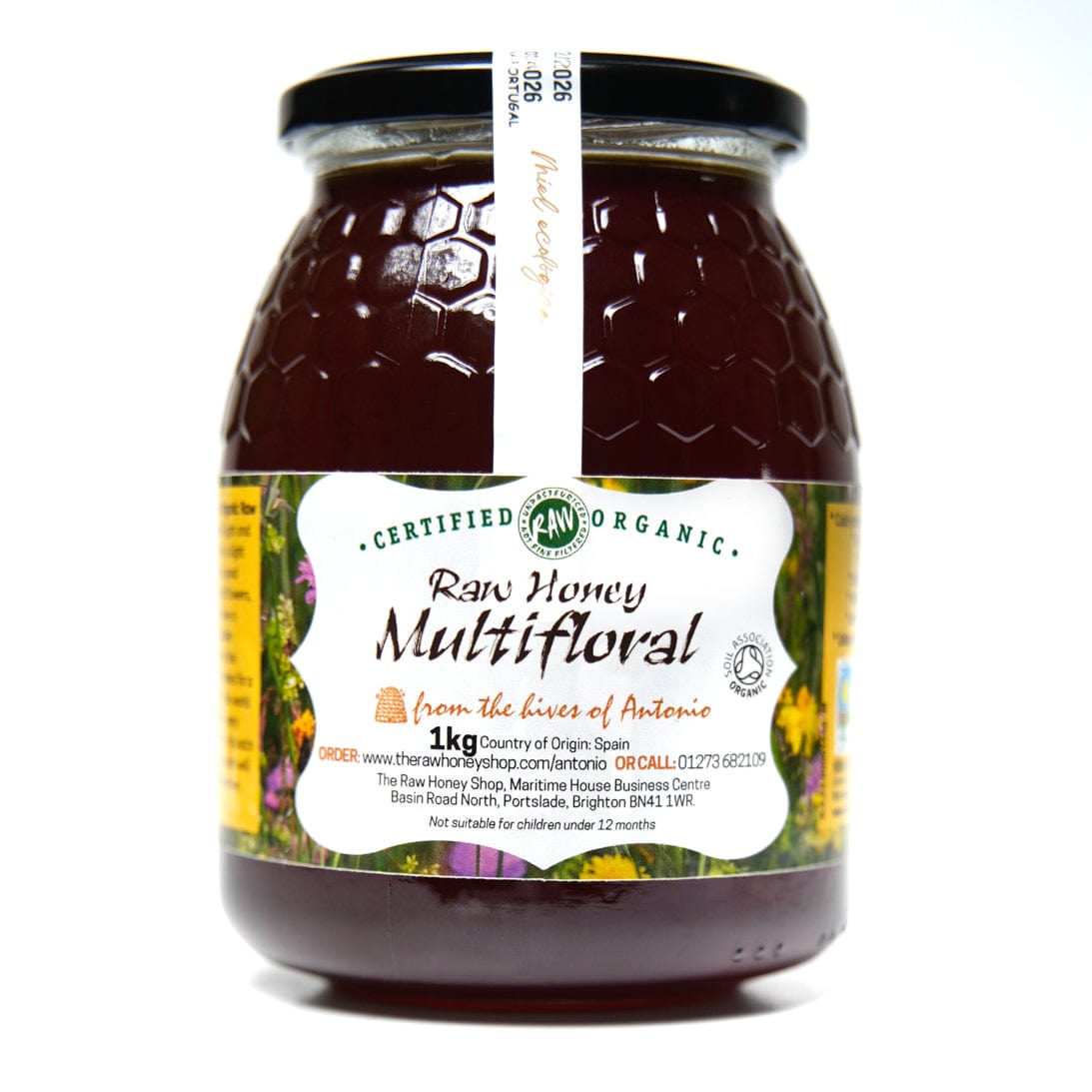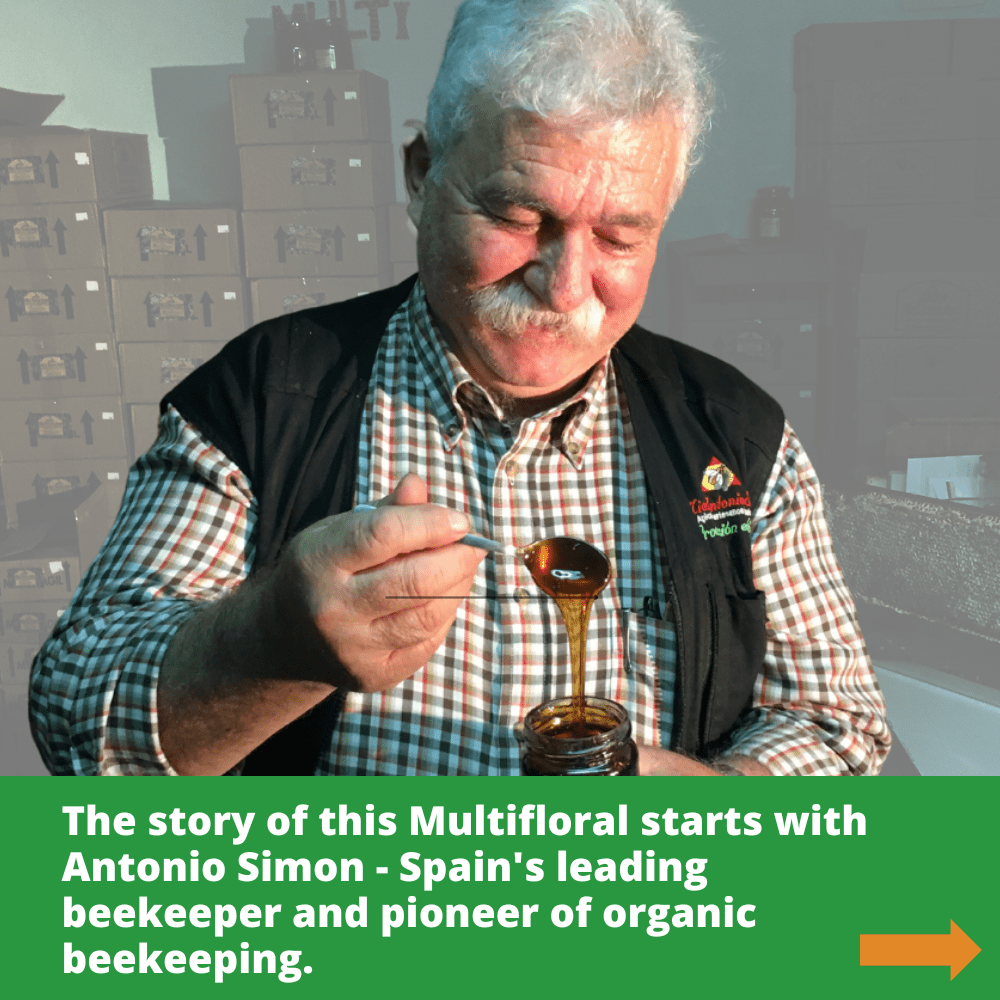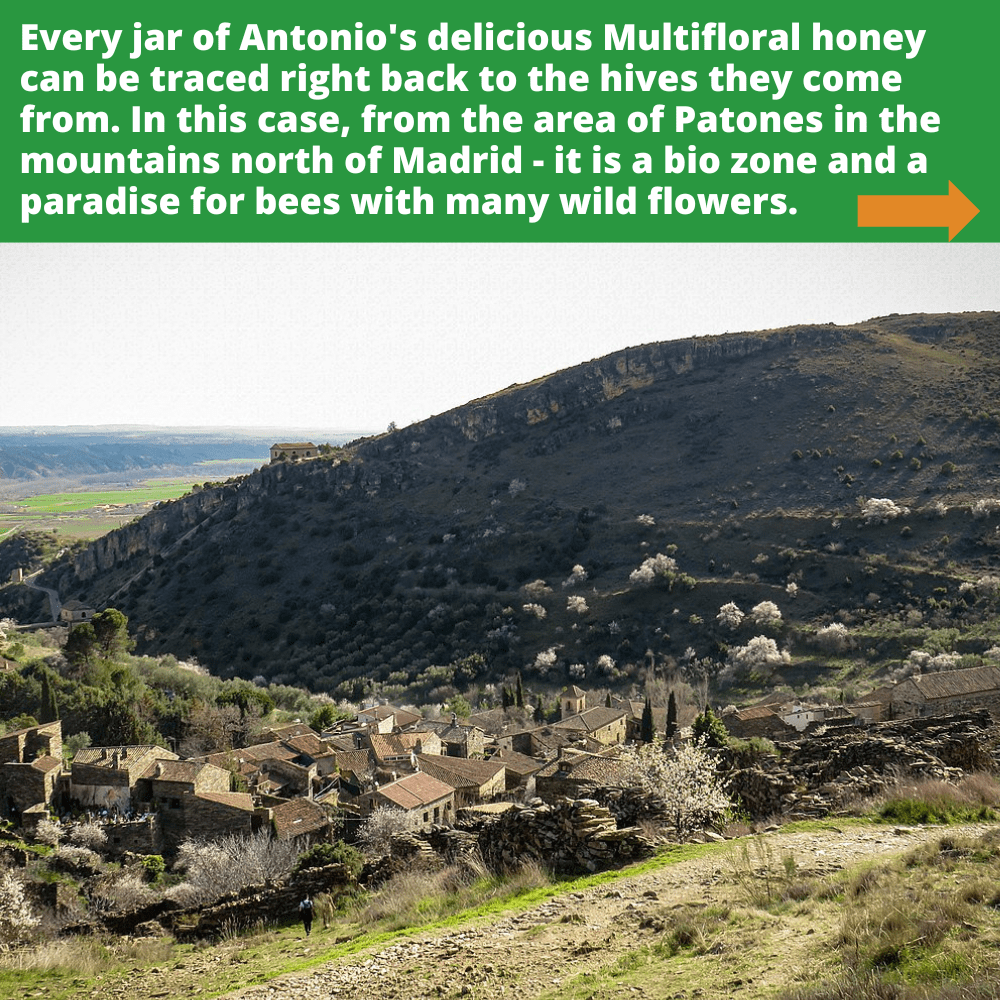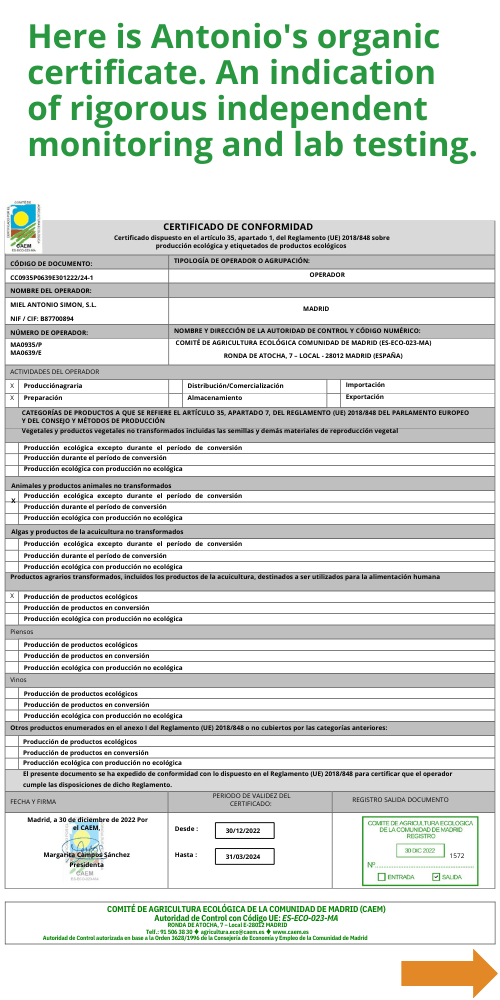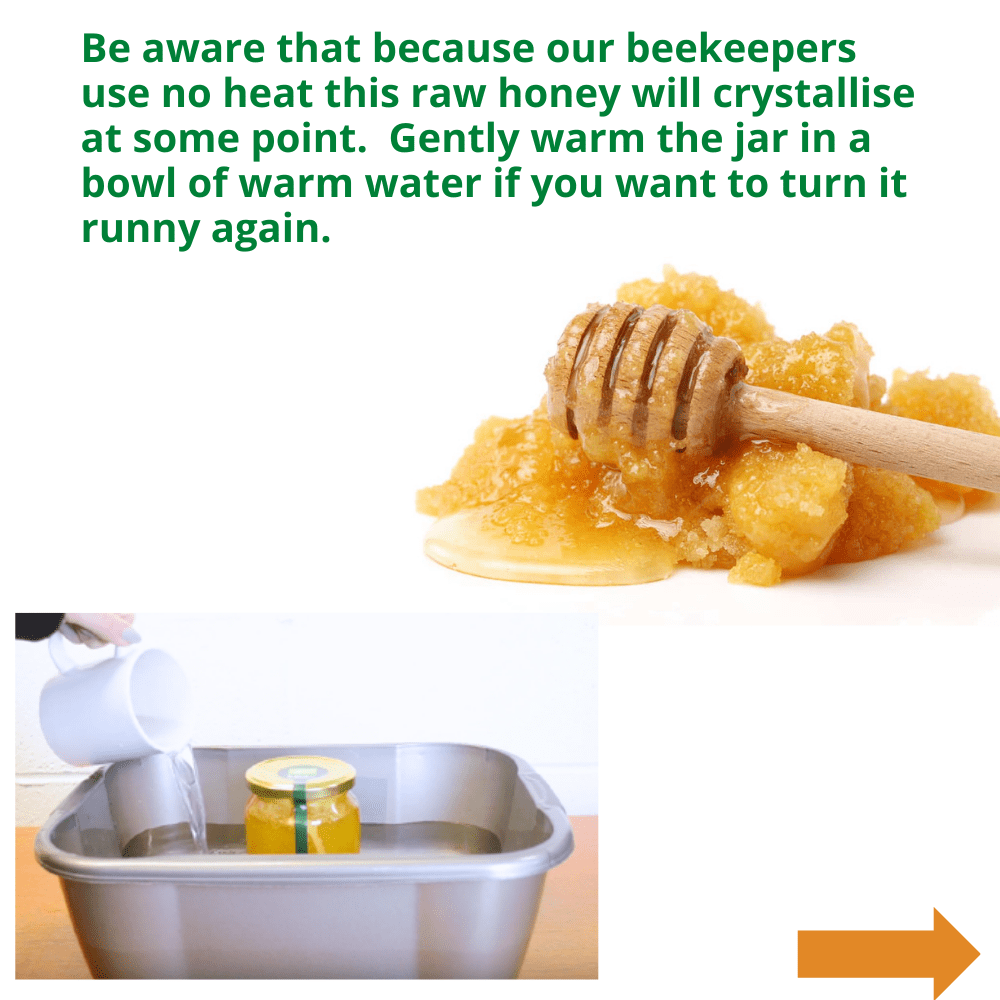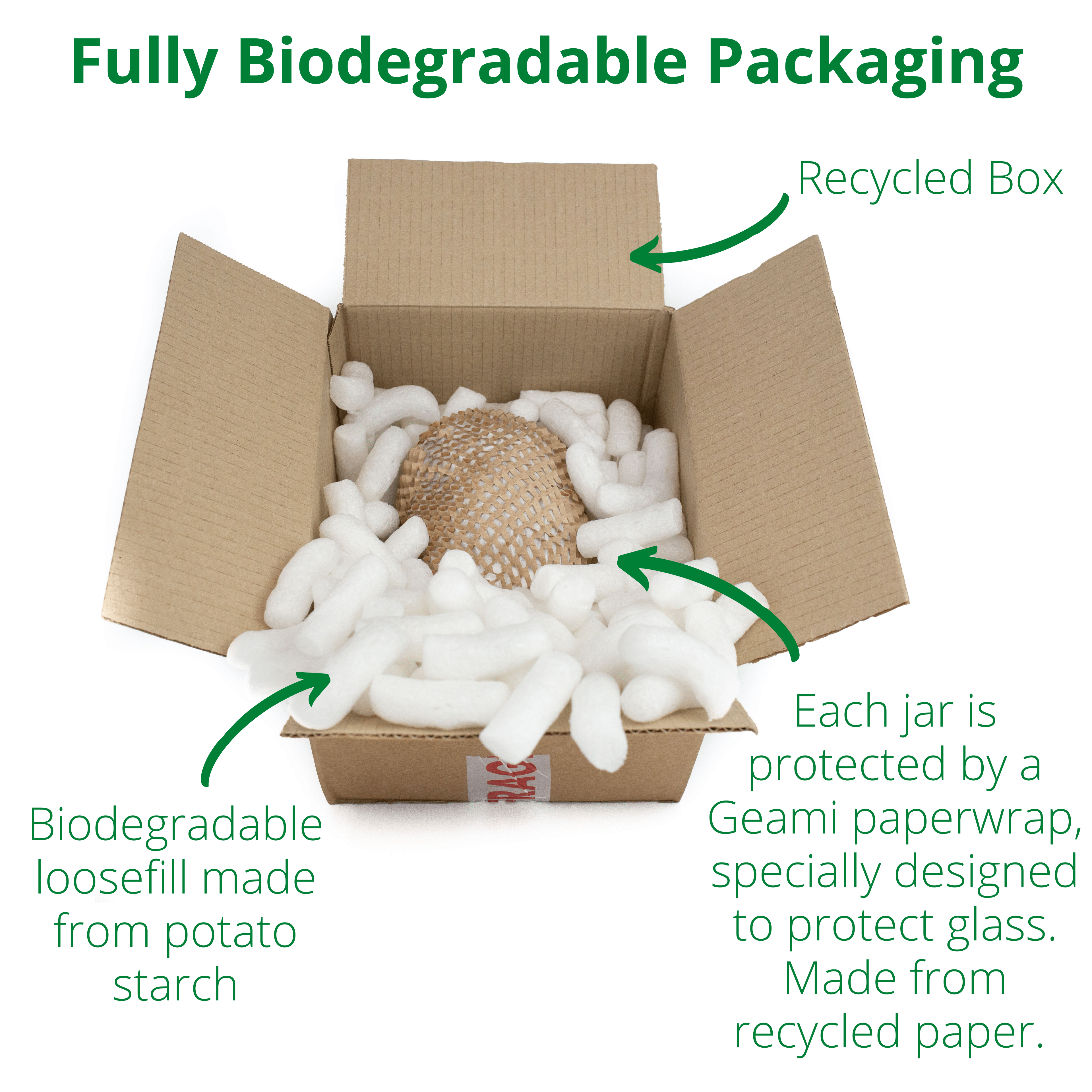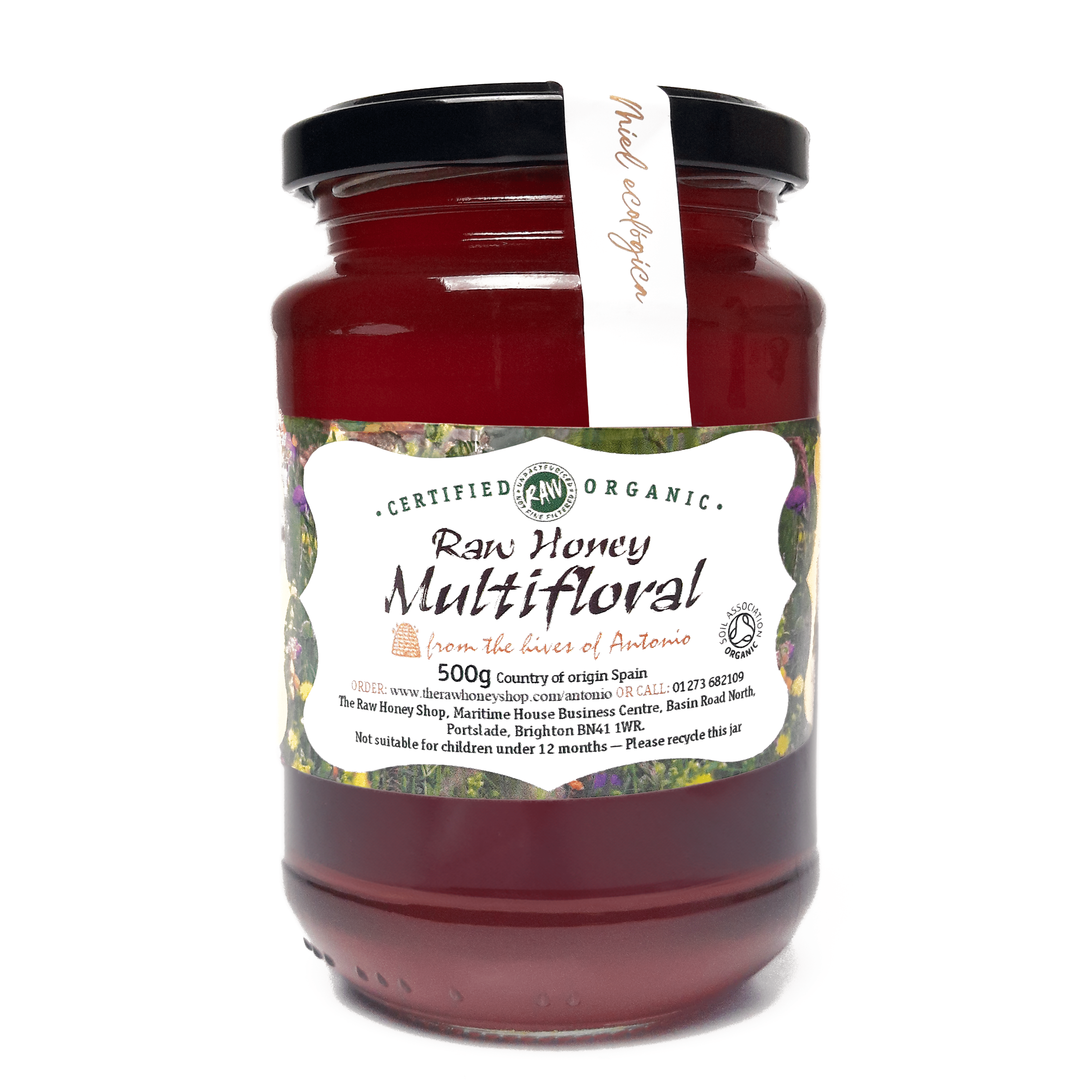Raw Organic Multifloral Honey - Certified Organic Runny
- Regular price
- EUR 31,95
- Sale price
- EUR 31,95
- Regular price
-
EUR
Antonio's Raw Organic Multifloral Honey generally has a light and creamy flavour with a slight menthol taste and a good amount of floral wild flowers, though it can also have a much darker and bolder flavour depending on the batch. This variety makes for a great entry point to the world of raw honeys. Multifloral honey can vary quite a bit from batch to batch as the flowers and plants will change due to the weather. We also sometimes get a batch of multifloral honey, which comes from the forest, and is much darker and stronger in flavour.
Colour: Depending on the season, this particular honey can go from a rich, dark toffee colour, which turns a deeper shade of orange when set, to a lighter, amber colour going a a lovely shade of orange in the light.
Where does the honey come from? This multifloral honey comes from a remote village called Patones, located in Jarama Valley in the northeast of Madrid, Spain.
Who produces the honey? The bees of Antonio Simon, a 4th generation beekeeper who takes pride in producing honey in a traditional way without adding or taking away anything. Antonio's hives are mainly based in the mountain ranges of north of Madrid. His beekeeping practices and the land he has his hives on have been certified as organic by the Committee of Organic Agriculture in Madrid
What about the plant the honey comes from? The wild flowers and flora of northern Madrid are vast amongst the mountainous regions. There are Thymus, Lavendula, Borago, Crocus and Romulea, just to name a few that are in multifloral honey!
Common Uses: Multifloral honey is particularly good to use as a skin treatment to aid in clearing blemishes, spots and acne, it is also very versatile in different recipes, such as: a glaze for meats, with salads, cakes, flapjacks, breads and teas.
More facts on multifloral honey: Multifloral honey varies widely depending on the areas the bees have been feeding on, it can be wild meadows or forest flowers or just a mix of any flora in the local area.
Crystallisation:- Please know that raw honey does crystallise and is a natural process of raw honey (therefore we cannot except returns on honey that may have crystallised). We indicate on the website the state of each honey - either runny or crystallised but be aware this is to the best of our knowledge and the state can change quickly. If you want your honey runny and it has crystallised it's very easy to return it to runny go to this link Runny Honey or see this section under our FAQ's Why Is My Honey Crystallised?
We only supply raw honey because we believe this is how all honey should be. If you don't want your honey to crystallise then raw honey probably isn't for you.
For more information on why honey sets visit this article and for a more scientific explanation go to wikipedia.org, search ‘honey’ and then go to the section headed ‘Physical and chemical properties’. https://en.wikipedia.org/wiki/Honey
About Us - Here at The Raw Honey Shop we take honey very seriously and we believe honey should be RAW, unpasteurised and 100% natural. Since 2008 we've been introducing our customers to a whole new world of pure all natural unpasteurised raw honey. With a product catalogue consisting of over 30 different raw and organic honeys we have a variety to suit all tastes.
Thank you for visiting our shop and we look forward to introducing you to a world of raw, pure and truly wonderful natural honey, the way the bees would want it!
*Product photo is representative of this product. Honey colour and texture may vary depending on the season and level of crystalisation. Please check the product title and description for accurate contents. Please note that we are currently reprinting labels and the label on your jar may differ from the photo.*


